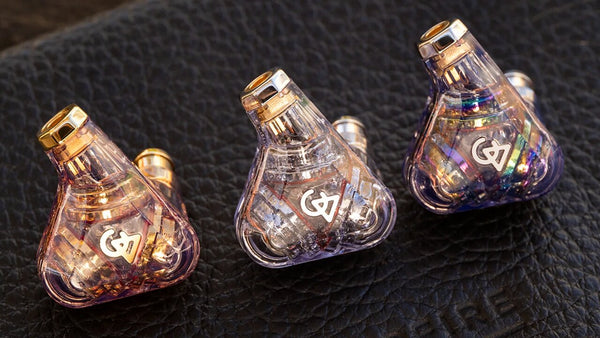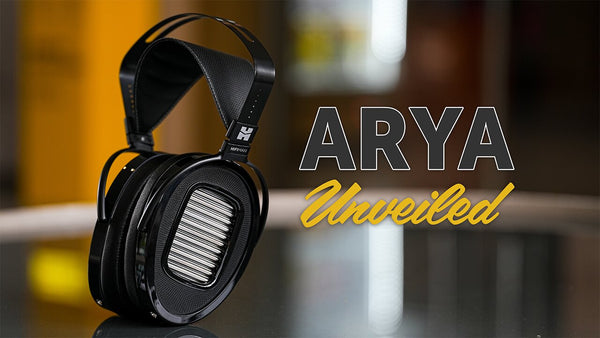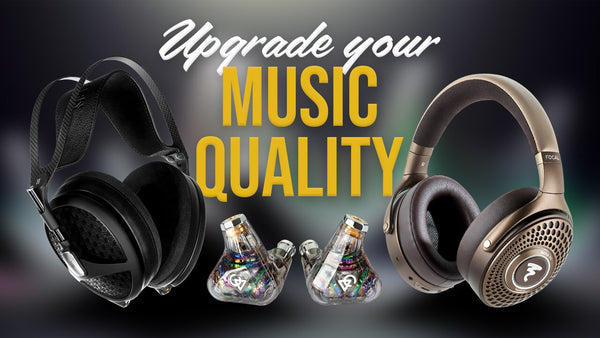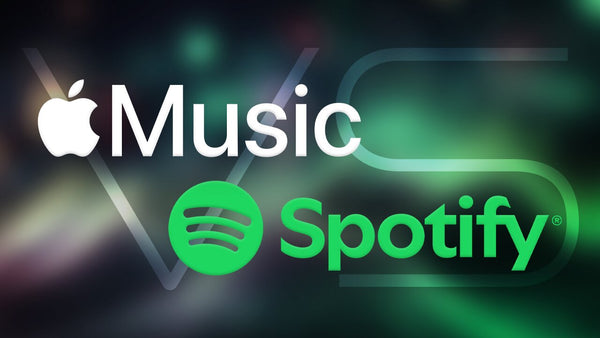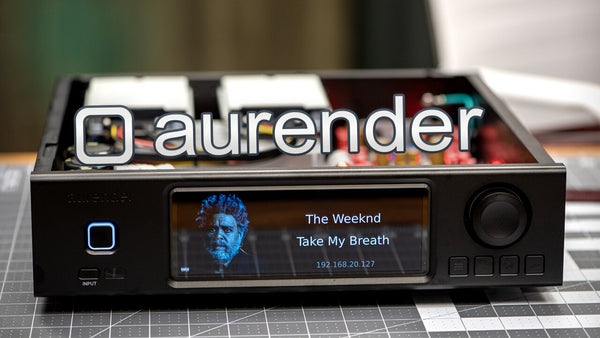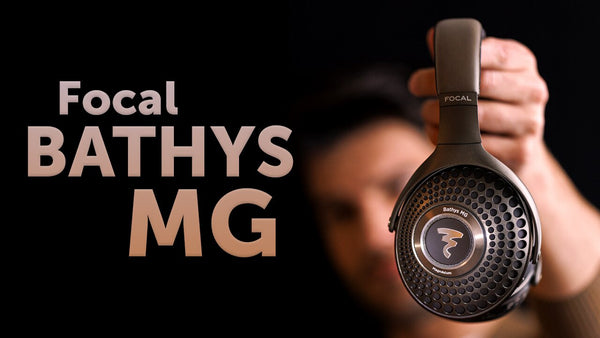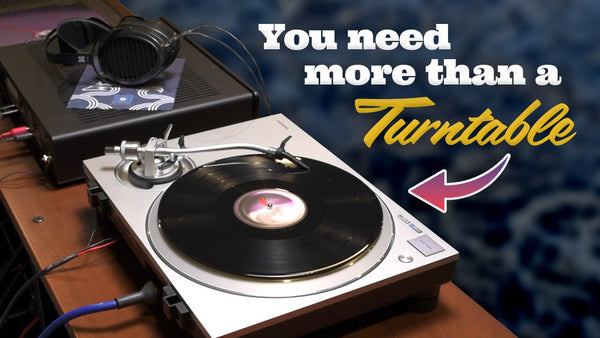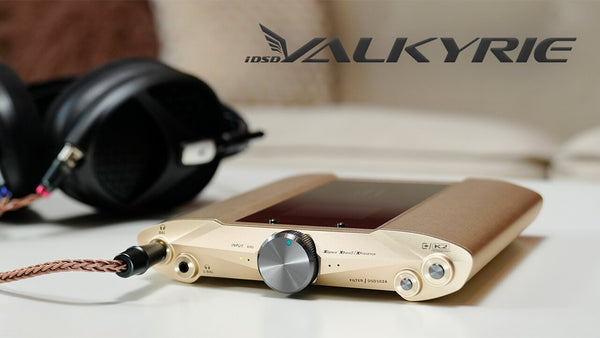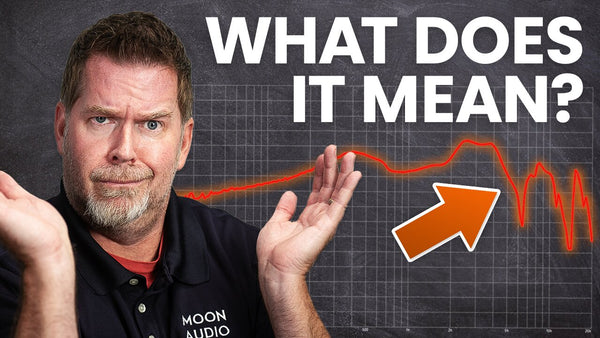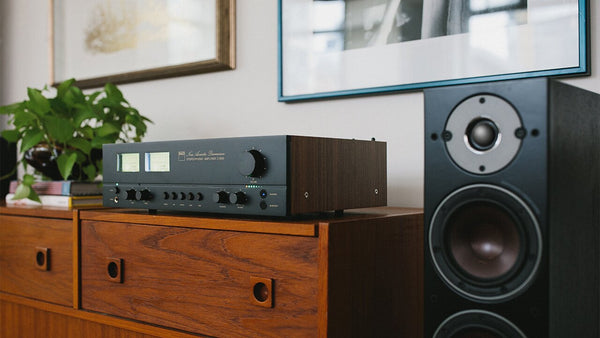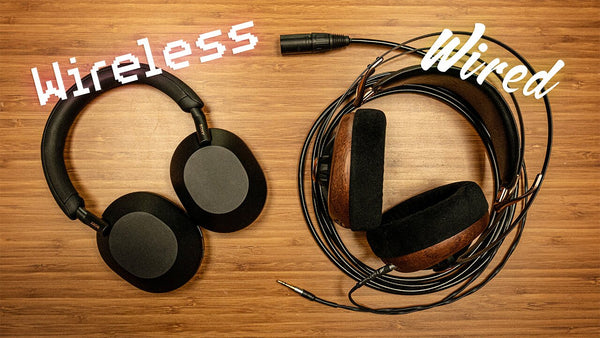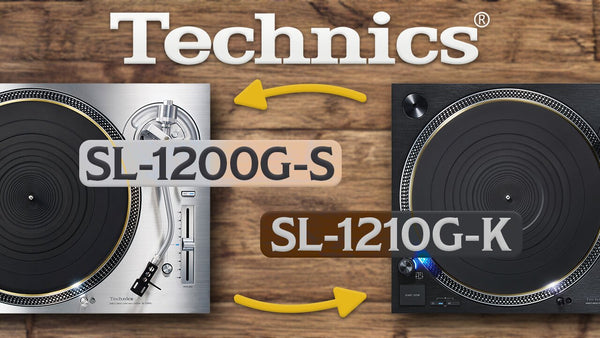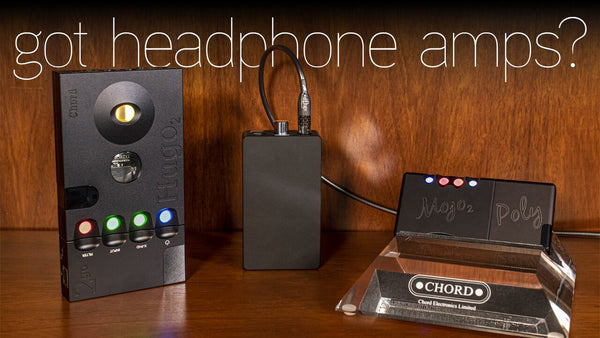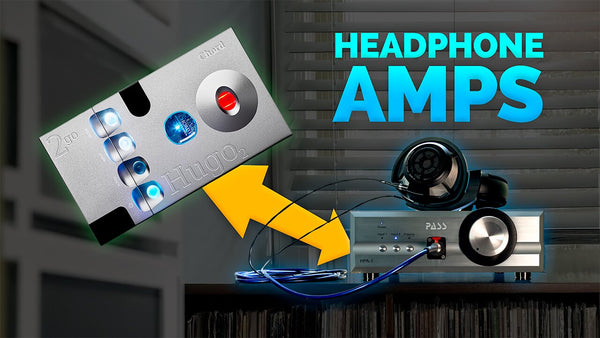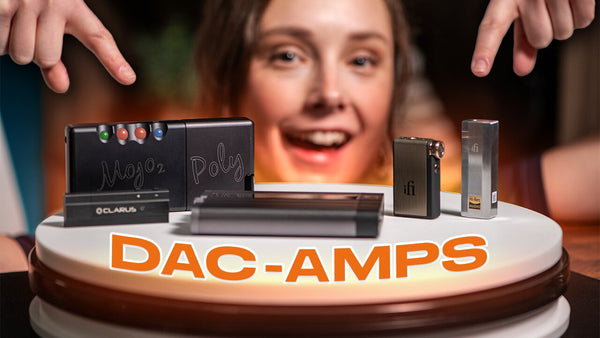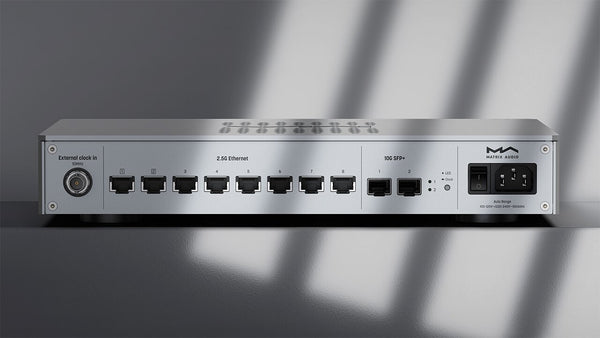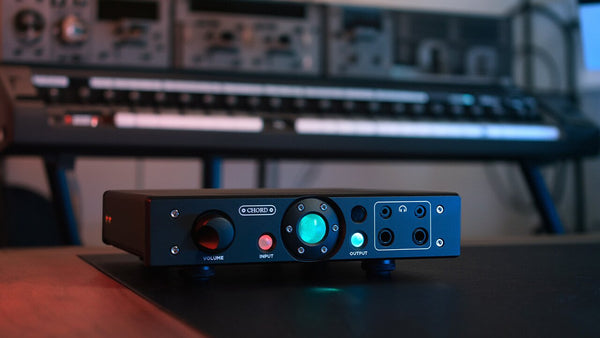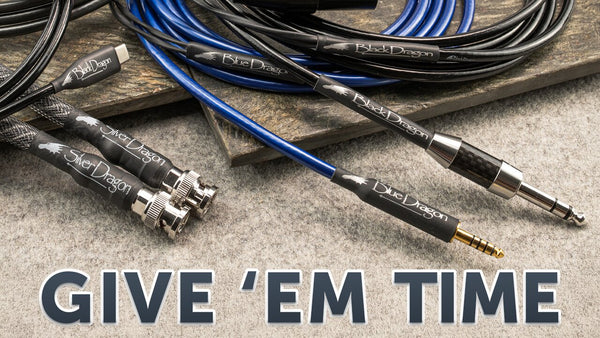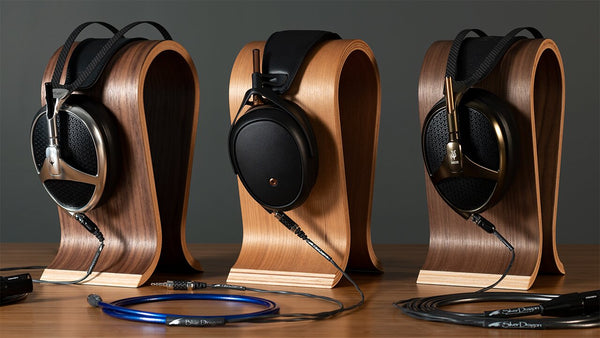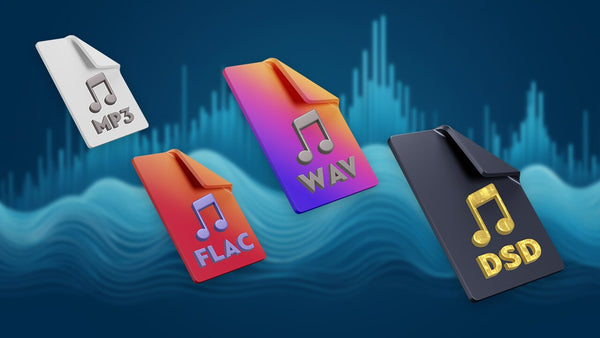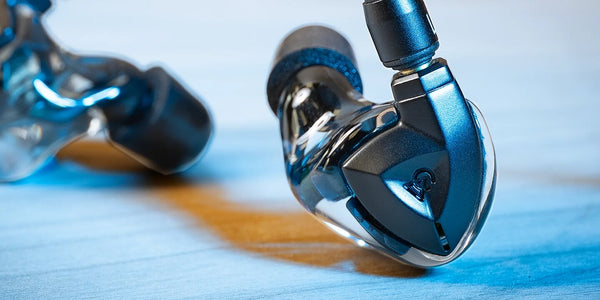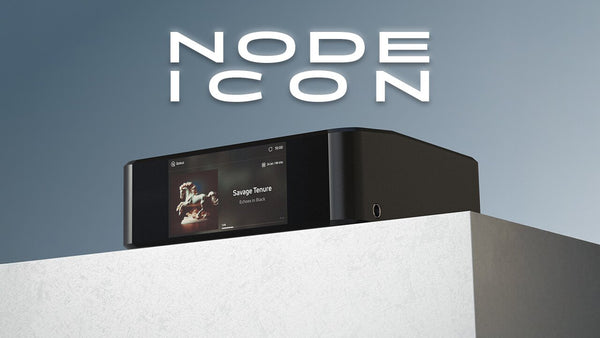Essential Guide to Streaming Hi-Res Audio for Audiophiles
Read Time: Approx. 20 min.

How to Maximize Sound Quality on Popular Streaming Services
Chances are most of your music collection these days is digital. You probably have vinyl, tapes and CD’s on your bookshelf at home, but you’re probably not packing them in your bag when you leave the house.
Granted, analog sources like vinyl and cassette tapes (yes, even cassettes) are having a resurgence lately, but most digital audio and streaming subscriptions allow you to take your entire music library with you wherever you go. Besides the convenience factor, is the digitalization of music a good thing? Everyone says, “Vinyl sounds WAY better than CD. You can’t even compare the two.” Is this true?
Let’s take a quick look at the history of recorded music to see how we’ve arrived at the digital world of music we live in today.
Analog to Digital Conversion: The Recording Process
The recording process has changed a lot over the years. Originally, music was recorded using the signal straight from the microphone and tracked or recorded directly to analog tape. The waveform of the microphone is an analog wave, therefore making the wave on the tape analog as well. At that time, tape was the dominant recording format, while both vinyl and tape were the primary playback formats. All the analog information is already on the tape or vinyl, so in order to produce sound, you need something to read the tape or vinyl, amplify the signal and send to a speaker to produce the sound it created.
In the case of the vinyl record, the analog wave is printed on the disc and the stylus on the record player fits into the grooves on the record. The stylus then picks up and sends the etched vibrations through the cartridge in order to produce an analog signal to be amplified. In a stereo record groove, the right channel is recorded on the right wall, and the left channel is recorded on the left wall. Regardless, the analog information, like tape, is included in the medium and all that is needed to produce sound from the tape or record player is an amplified speaker source.
Today, most of the time recordings are saved as digital data. The analog wave from the recording is sampled at the desired interval and then turned into numbers (1’s and 0’s) that are stored on the digital device. Each sample is essentially a small “chunk” of the analog wave, like ‘cutting” the tape into smaller pieces. On a CD, the sampling rate is 44,100 samples per second; so, there are 44,100 numbers stored per second of music. That data is then stored onto the disc in order to be decoded later by a CD player.
The CD player then uses a digital-to-analog converter (DAC) to process the data and numbers into an analog waveform; using elements like bitrate, sample rate and bit depth into account to recreate an accurate waveform. Learn more about digital-to-analog conversion and the importance of a good DAC for your system HERE.
The quality of the DAC converting the digital data to analog audio is a critical component of your audio system that has a direct impact on the overall fidelity of your music. This is especially important when listening to higher resolution audio files with lots of data.
The Point:
- Sound itself is analog
- Sound used to be (and sometimes still) recorded as analog, but is more and more done so digitally today
- Since your ears cannot hear and process data, you need a digital-to-analog converter (DAC) to convert the data to an analog signal
Digital Music

Digital music became popular with the emergence of the compact disc, or CD, by the mid 1980s, and were outselling cassette tapes by the early 90’s. The development of the iPod pushed digital music to the forefront, and since then most of society hasn’t looked back. There is something tangible and exciting about being able to have “thousands of songs in your pocket” (quote by Apple). First the iPod and now your phone.
The digitalization of music has certainly had its effect on the industry with trends straying away from physical media. It’s a convenience. There might be a time and a place to pull out a vinyl record and listen to an album from start to finish while reading the album insert, but for most people today, the hustle and bustle of the real working world forces a lot of people to partake in their music when the opportunity arises. On your commute to work, during your lunch break, riding the subway, while running or walking, there are many examples where people like to listen to music outside of their home and away from their high-fidelity home sound system.
Perhaps a good way to look at the emergence of digital music is not so much that it has ruined the analog or physical media industry, but rather offered consumers more ways to listen to their music. It is not an either/or but rather an and, and digital music is a means for us to listen to our music when and where we want to listen to it.
The fact remains that as music becomes digital, we need space to store the data. As music libraries become larger when they need more space to store them on. And as the demand grows for higher resolution audio, so do the file sizes and the need for even more storage. Eventually there becomes a point where you simply don’t have enough storage to keep your entire music library with you.
But why worry about storage space at all? Today it seems like everything is becoming more integrated and dependent on the “cloud.” Keeping files online for storage and access without having to worry about taking up local space is the major benefit of cloud storage.
Enter Music Streaming: Why spend money on new music when you can pay a monthly fee for access to an entire music library of millions of songs, including brand new releases?
The development of streaming services across the industry has become the new normal, much to the consumer’s dismay. The plethora of streaming choices offers us extreme flexibility in choosing the specific services we are wanting, but the downside for most is that you have to prioritize which services you want due to various and cumulative price points.
The Point:
- The digitalization of music offers people more opportunities to listen to music than ever before
- The higher the resolution the larger the file sizes, thus it becomes more difficult to store tons of music on a single device
- Music streaming offers great fidelity without taking up local storage space
Streaming Music
Music streaming services are the latest craze in the audio world. Why spend money on CDs, records, digital downloads or singles when you can sign up for a monthly subscription to get access to millions of songs and thousands of albums? Like TV and network streaming apps, there's so many out there now that it can be a little daunting trying to figure out which service is best for you.
Streaming Music is a huge opportunity to gain market share for so many companies these days that it has left the consumer with loads of new choices. These choices include Pandora, Spotify, Rhapsody, Beats Music, Amazon Music, BeatPort, SoundCloud and many, many more.
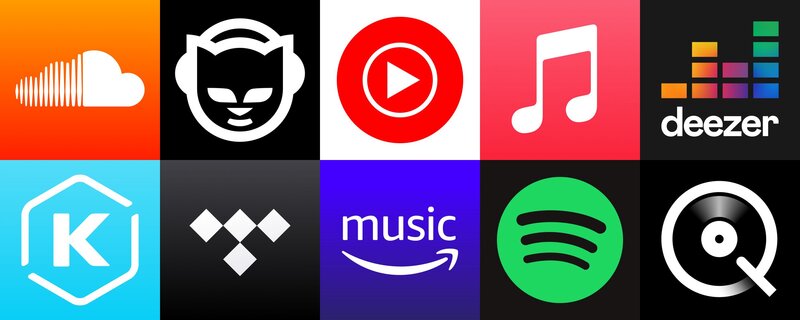
Each service offers some different options, different stream qualities, library variations and more. We'll break down what each service offers, but first, let's look at what high-resolution audio is and why it sounds better than standard/lower resolution digital audio.
What is High-Resolution Audio?
High-resolution audio can be defined as music that is better than CD-quality, or rather audio that has a sample rate greater than 44.1 kHz and a bit depth larger than 16-bit. Although some streaming services tout CD-quality audio as “High-Definition” or “HD Audio,” the general consensus on Hi-Res is better-than-CD quality.
Most outside of the audiophile world might not know that compressed music files (such as MP3) robs integral details, emotion, and depth from the original composition. In today's world of satellite radio and single-sales music industry, the average music lover assumes louder means better when in reality it's making the listening experience inferior.
Compression works the same in audio as it does in video: by making the file size smaller, and specifically in the case of video, shrinking the image and making it grainier. The innovation of lossy audio compression was originally invented to use psychoacoustics to recognize that not all data in an audio stream can be perceived by the human auditory system. Depending on the encoding, compression takes out small parts which should be inaudible to the ear. In the process, the dynamic range is reduced and in terms of the data itself, the overall file size is also reduced. A lot also depends on the playback system; where it can be easy on a high resolution system to hear the loss in fidelity of a compressed file, but less so on a factory car sound system.
There are three main components in high-resolution audio that we need to keep in mind:
- Sample Rate–refers to how many samples of data were taken in a second
- Bit Rate–refers to how much data is being stored per second
- Bit Depth–refers to how much data is recorded per sample
The more information or data the recording has then the more faithful reproduction of the original audio recording. Generally speaking, more data = larger file sizes = better quality audio. These components determine the overall quality of the music file.
In the case of the CD, or compact disc, there are 176,400 bytes per second, 44,100 samples per second of music (or 44.1 kHz) at 16 bits per sample. Sony set this precedent when they were pushing the new audio format and it remains a standard for minimum high resolution audio, since most popular streaming services today stream audio at much reduced rates.
High-resolution audio is lossless audio capable of reproducing the full range of sound from recordings that have been mastered from as-good or better-than CD quality music sources, a sound that closely replicates the quality of the musicians and engineers were working within the studio at the time of the recording.
The most popular streaming sites today do not transmit true high-resolution audio files. At least not yet. There is a lot of data to transmit, and for a long time, bandwidth and internet speeds were a big factor in preventing large audio files to be streamed in real-time online. Today we don’t necessarily have to worry about those constraints, but internet speeds and compatible hardware are still first and foremost considerations if you are wanting to stream high-resolution audio.
However, as time goes on we are beginning to see more streaming companies offering higher-quality streaming options as the competition increases among companies. “That streaming service might have more music, but this one has better quality music,” and so on and so forth.
The Point:
- Higher-resolution music files are much larger and take up more storage space
- Most popular streaming sites today do not transmit true high-resolution audio files.
- But it is becoming more popular and will become the new standard eventually.
Compression and File Types
Audio Data Compression
Not to be confused with Dynamic Range Compression (DRC), which is the process of reducing the dynamic range of the audio by reducing the loud sounds and amplifying quiet sounds, data compression refers to minimizing the size of an audio file. Audio compression algorithms are implemented in software as audio codecs. Different compression algorithms result in different types and various reductions of information in the files. We won't go into the actual coding methods of each algorithm at this time, but we'll do a basic overview of file types and the kind of compression they implement.
Uncompressed Audio Formats
Uncompressed audio formats are large file types that can take up a considerable amount of space on your storage drives due to the amount of information they contain. However, the quality of the audio is unchanged from the original file - uncompressed and unaltered.
- WAV: Waveform Audio File Format is an audio file format standard, developed by Microsoft and IBM, for storing an audio bitstream on PCs.
- AIFF: Audio Interchange File Format is an audio file format standard used for storing sound data for personal computers and other electronic audio devices. The format was developed by Apple Inc. in 1988 based on Electronic Arts' Interchange File Format and is most commonly used on Apple Macintosh computer systems.
- AU: The Au file format is a simple audio file format introduced by Sun Microsystems. The format was common on NeXT systems and on early Web pages. Originally it was headerless, being simply 8-bit μ-law-encoded data at an 8000 Hz sample rate.
- PCM: Pulse-code modulation is a method used to digitally represent sampled analog signals. It is the standard form of digital audio in computers, compact discs, digital telephony and other digital audio applications.
- BWF: Broadcast Wave Format is an extension of the popular Microsoft WAV audio format and is the recording format of most file-based non-linear digital recorders used for motion picture, radio and television production. It was first specified by the European Broadcasting Union in 1997, and updated in 2001 and 2003.
Compressed Audio Formats
Lossless audio compression produces a representation of digital data that decompress to an exact duplicate of the original audio file. Therefore, no actual data is lost when decompressed, but will still result in smaller file size (when compressed) than the original file. A popular format for archiving.
- FLAC: FLAC is an audio coding format for lossless compression of digital audio, and is also the name of the free software project producing the FLAC tools, the reference software package that includes a codec implementation.
- WavPack: WavPack is a free and open-source lossless audio compression format.
- Monkey’s Audio/APE: Monkey's Audio is an algorithm and file format for lossless audio data compression. Lossless data compression does not discard data during the process of encoding, unlike lossy compression methods such as AAC, MP3, Vorbis and Musepack. Monkey's Audio files use the filename extension .ape for audio, and .apl for track metadata.
- ALAC: The ALAC file extension is a data format associated with Apple Lossless Audio Codec (ALAC). ALAC files were developed by Apple. These files use M4A format because ALAC is a codec used for encoding audio data and not an audio file container format like an MPEG-4 file.
- WMA: WMA is a file extension used with Windows Media Player. WMA stands for Windows Media Audio. WMA is both an audio format and an audio codec. WMA was intended to be a competitor for the MP3 and RealAudio audio formats.
Lossy Compressed Audio Formats
Loss algorithms utilize psychoacoustics to recognize that not all data in an audio stream can be perceived by the human ear. Because of this, specific information is identified and either coded with decreased accuracy or removed entirely. From a file size point of view, lossy compression is superb at creating smaller file sizes overall than lossless compression, but due to the algorithms it uses, audio quality oftentimes suffers in comparison.
- AC3: AC3 is a file extension for surround sound audio files used on DVDs format. The AC3 file format was created by Dolby Labs for use in a Dolby Digital audio on DVD, Blu-ray and other digital video formats. AC3 stands for Audio Coding 3.
- DTS: dts file extension is used for an audio file format that was created by DTS, Inc. These DTS files are also known as Digital Surround Audio files. DTS, which is a series of multichannel digital sound technologies, are integrated into many audio playback hardware products.
- AAC: Advanced Audio Coding is an audio coding standard for lossy digital audio compression. Designed to be the successor of the MP3 format, AAC generally achieves higher sound quality than MP3 at the same bit rate. AAC has been standardized by ISO and IEC, as part of the MPEG-2 and MPEG-4 specifications.
- MPEG: MPEG-1 Audio Layer II or MPEG-2 Audio Layer II is a lossy audio compression format defined by ISO/IEC 11172-3 alongside MPEG-1 Audio Layer I and MPEG-1 Audio Layer III. While MP3 is much more popular for PC and Internet applications, MP2 remains a dominant standard for audio broadcasting.
- VORBIS/OGG: Ogg is a free, open container format maintained by the Xiph.Org Foundation. The creators of the Ogg format state that it is unrestricted by software patents and is designed to provide for efficient streaming and manipulation of high-quality digital multimedia.
- REAL AUDIO: RealAudio is a proprietary audio format developed by RealNetworks and first released in April 1995. It uses a variety of audio codecs, ranging from low-bitrate formats that can be used over dialup modems, to high-fidelity formats for music.
We are seeing more streaming services considering higher resolution audio, but it is important to note that not all standard electronic devices can play back these formats. You’ll need specific hardware that supports high-resolution format playback in order to make the most out of your audio. For instance, your iPhone will not be able to playback uncompressed FLAC files, so you’ll need to make sure the hardware in your audio system will support your high-resolution files or is compatible to be able to stream similar files if you are wanting to stream them over the internet (we’ll save music servers and streamers for another post).
The Point:
- Compression varies - different compression algorithms result in differing audio quality.
- Uncompressed file types are larger and result in the best audio quality.
- Compressed file types vary from lossless to lossy types, lossless resulting in the better audio quality.
- Devices and media players vary in the kinds of formats they can playback. Contact us if you have any compatibility questions.
Where Can You Purchase High-Resolution Audio?
There are a number of ways that you can beef up your audio library with high-resolution files and not low res mp3s. One easy way is by burning your CD collection. Of course, this is the more time consuming option, but it gives you the most control over the fidelity of your music. It’s also the cheapest option since you are copying what you already own.
The trick here is finding the time to do it. Luckily, there are some CD burners that can automatically find the metadata and integrate the files into your library. One example is the Bryston BOT-1 - it does all the hard work for you. It will rip the CD directly to the attached drive, look up the metadata via the internet, and automatically add and categorize the music into your existing library.
This kind of gear is great if you have a large cd library that you are looking to digitize and access on your home streaming devices or take on the road with you.
Another means of getting high-resolution audio is by simply purchasing it. Many online music stores have options to purchase higher resolution versions, and though they might be more expensive, it gives you access to exactly what you are looking for - all in high fidelity. Qobuz and HDTracks are excellent examples of this. Recommended sites:
- Qobuz: Good variety of music and formats; available in the United States, France, UK, and Germany
- HD Tracks: Good variety of music; both DSD and PCM; available in the United States, UK, and Germany
- Super HiRez: DSD, FLAC, and ALAC; available in the United States and Canada
- Idagio: Great for classical music
Where Can You Stream High-Resolution Audio?
Amazon Music
Amazon Music Unlimited
Apple Music
Pandora
Qobuz
Soundcloud
Spotify
Tidal
YouTube
What's the Best Streaming Service?
Needless to say, this is only a fraction of the total number of streaming services available right now. Each service offers its own selection of price points, libraries, and other features, so you'll need to consider which one is best for you. As you can see below, there are plenty of streaming services to choose from:
- 8tracks
- AccuRadio
- Amazon Music
- Anghami
- Apple Music
- Bandcamp
- Deezer
- Earbits
- Google Play Music
- Hoopla
- iHeartRadio
- Jango
- Joox
- Line Music
- MOOV
- Music Choice
- MyTuner Radio
- Napster
- NetEase Cloud Music
- Pandora
- Patari.pk
- Qobuz
- Radical.fm
- Saavn
- SiriusXM
- Slacker
- SoundCloud
- Spotify
- Stingray Music
- Tidal
- TuneIn
- YouTube Music
How Do You Play High-Resolution Audio?
The unfortunate thing is that a lot of high-resolution formats aren’t easily playable on your smartphone or computer. They’re either incompatible or you need to download specific codecs for your media player so that they can be played.
There's a lot of ways you can play your high-resolution music on various devices in your home. Here are some of the most popular options...
Phone
The most popular and common option to play your high-resolution music is from your phone. Since almost everyone has a smartphone these days, the emergence of streaming services which offer high-resolution audio make their music libraries accessible with just the touch of the finger to open the application.
Paired with a portable DAC and your favorite headphones, you'll have an arsenal of audiophile tools ready to take on any kind of music thrown at you. It really is a convenient and portable setup, especially considering that a lot of companies make cases that securely affix your DAC to the back of the phone so everything is really easy to carry in the palm of your hand.

Tablet
Like your phone, a tablet serves as a convenient method to access your high-resolution streaming services, as well as any locally saved music on your device. Some of the applications on tablets are optimized for larger screens and can make navigating through your library more manageable.
Also with the compatibility of Roon Software and the devices being used as Roon endpoints, integrating your existing music library into your streaming one is easier than ever now. All your music in one place. Accessible via your mobile device no matter where you are in the house.
Digital Audio Player (DAP)

Digital Music Players are possibly the easiest way to listen to your high-resolution music. Already compatible with numerous high-fidelity codecs and housing enough power to juice your favorite cans, it's all you need in one package (minus your headphones of course). No larger than your cell phone, DAPs are essentially iPods on steroids, and with plenty of internal and expandable storage, you can be sure that all your large files and favorite music can go with you.
In some cases, DAPs like the KANN Cube can do double duty and will be compatible with your home systems as well. Astell & Kern DAPs have what they call their Open APP service allowing select 3rd party android applications to be installed on the devices so you can be sure you have all your streaming and music services under one device.
Recommended DAPs
Astell&Kern SP3000M DAP
One of Astell&Kern's most portable DAPs yet, the A&ultima SP3000M Music Player delivers exceptional playback and performance in a lightweight, compact form factor. As the predecessor to the Astell&Kern A&ultima SP3000 DAP, the SP3000M retains many of the high-quality features like the Snapdragon 6125 Octa-Core processor, Digital Audio Remaster Technology (DAR), and TERATON ALPHA Sound Solution. With 3.5mm and 4.4mm outputs and support for many audio formats, like LDAC, WAV, and FLAC, the SP3000M is a highly versatile digital audio player capable of Native DSD 512, and 32-bit/768kHz PCM, driving your favorite IEMs and headphones of various impedances. Equipped with Astell&Kern's flagship DAC chip AK4499EX from AKM, you'll enjoy a detailed, dynamic, and balanced sound quality with incredible imaging, layering, and a soundstage fit for an audiophile's discerning ears.
Dragon Cable Recommendation: Silver Dragon Premium USB Cable
Astell&Kern SP3000T DAP
Building upon the success of the highly acclaimed SP3000 DAP, the SP3000T incorporates the warm, rich sound of tube amplification into a portable audio player. The SP3000T features Astell&Kern's innovative Triple Amp System, which was first introduced in 2021 with the A&ultima SP2000T. By integrating a real vacuum tube, Astell&Kern has created an authentic analog sound complemented by advanced audio features such as TERATON ALPHA, tube current settings, and the hybrid amp design. This unique fusion of analog and digital excellence results in an immersive auditory experience that defies convention, setting the A&ultima SP3000T apart as a truly exceptional portable audio player.
Dragon Cable Recommendation: Silver Dragon Premium USB Cable
Sony NW-WM1ZM2 Walkman DAP Music Player
The top-of-the-line Sony WM1ZM2 Walkman DAP is the pinnacle of Sony's portable audio player lineup. This flagship digital audio player boasts a luxurious, gold-plated oxygen-free copper chassis that not only exudes elegance but also minimizes electrical interference and the OFC purity has been bumped up to 99.99% over the original WM1Z Walkman DAP. The copper lends the player its unique natural, acoustic sound and its conductivity and raw strength reinforce the Walkman with unrivaled audio performance. It's been called the Golden Brick, and yes, it does weigh a bit more at just over 17 ounces. We like to call it an Apple iPod on steroids!
Dragon Cable Recommendation: Silver Dragon Premium USB Cable
Add an IEM! The Perfect Portable Companion
Computer
Lots of amplifiers, DACs, and other gear are compatible with computers via USB connection. It's an easy one-stop-shop for many users: have all your music stored locally on hard drives and access it and other streaming services all on one device that you're already using for numerous other daily tasks like checking email, social media, etc. If you have the know-how to set up a NAS system, you can also use it to stream your music to other devices in your house.
Music Streamers
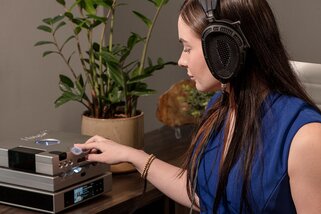
Music streamers are a newer phenomenon since the days of Wi-Fi have become standard. Streamers allow for your music to be transmitted from other sources to your high-grade speakers or headphones. For instance, say you wanted to listen to music from a music streaming service or a digital music library rather than a physical source like a CD or vinyl record. In this scenario you would want a music streamer to obtain the digital source of your music. High-end streamers also include features such as built in amplifiers and upgraded DAC chips; an all-in-one solution to your audiophile needs. Music streamers also allow you to make sure you are getting the best quality audio stream since they are usually capable of processing large files and very high-resolution audio.
Recommended Music Streamers & DACs
Matrix Audio Mini-I Pro 4 DAC
The Mini-I Pro 4 DAC from Matrix Audio is the latest in compact desktop streaming. With excellent digital input selection, streaming capability, high-quality DAC, a fully balanced amplifier, and more, the Mini-I Pro 4 illustrates what modern advances in technology can achieve: more power at an even smaller size. The software side is equally as important and impressive to the Matrix Audio Experience. With the MA Remote App, you have a robust and complete music streaming experience on your phone or tablet, giving you complete control over your music remotely and your device at the same time.
Dragon Cable Recommendation: The Silver Dragon Interconnect
iFi Audio Neo iDSD 2 Lossless Bluetooth DAC/Amp
Transform your desktop audio setup with the iFi NEO iDSD 2 Lossless Bluetooth DAC/Amp, a three-in-one unit featuring a built-in DAC, preamp, and headphone amplifier. What makes the iFi NEO iDSD 2 a next-level Desktop DAC is the implementation of the latest Bluetooth codecs transforming it into a Lossless Bluetooth DAC Amp. Equipped with the latest Bluetooth 5.4 technology and support for the new aptX Lossless, you can enjoy your favorite digital music without sacrificing sound quality. aptX Lossless is the first Bluetooth codec capable of streaming CD-quality audio and even hi-res audio without using any compression methods that notoriously deteriorate sound quality.
With improved headphone outputs and line outputs, newly added analog processing modes, and upgraded power consumption the iFi NEO iDSD 2 is an upgrade from its predecessor the iFi NEO iDSD Performance Edition Headphone Amp DAC.
Dragon Cable Recommendation: We recommend pairing the iFi Audio NEO iDSD 2 Lossless Bluetooth DAC/Amp with the Silver Dragon Interconnect with RCA and XLR connectors and the Black Dragon Coax Digital Cable with RCA connectors.
Bricasti Design M3 DAC with Network Card
Bricast M3 DAC features two fully differential conversion channels, separate conversion for PCM and native DSD, and a balanced analog level control circuit, making the M3 suitable for all applications. Internally the M3 utilizes two independent linear power supplies for the analog and digital processing to ensure low noise and superior isolation. The intention of the M3 is to provide a state-of-the-art design, utilizing the best designs and materials that can be found today. The converter and following analog stages are a very critical part of the digital and analog audio chain. The sound of the M3 is intended to be transparent and revealing, and fully dynamic. This in part is made possible by lowering the jitter to extremely low levels, providing a pure digital signal chain without sample rate converters, superior digital filter design, pure DSD conversion, coupled to a fast, transparent analog signal path with analog level control, discrete analog output section and plenty of good clean linear power for optimum analog performance.
Pairs Great with Home Audio Gear
Dragon Audio Cables
The most important step in your signal chain (and often the afterthought) is audio cables. Our Dragon Audio Cables are built using only the highest-quality materials so nothing stands between you and your music. From USB Cables to Headphone Cables, Interconnects, and IEM Cables, we make everything you need to enjoy your favorite songs.
Verdict
The fact remains that as technology continues to improve, the need for better quality music will increase. As most streaming services (paid and streamed) provide a number of varying audio qualities, all of them at least do the bare minimum. But what happens when the bare minimum isn't enough? As services get more competitive, the quality of the audio they provide should also increase, benefiting the consumer. Hopefully, lower-quality bit rate streams will be a thing of the past in future years, but for now, if you want high-resolution audio, you'll need to invest in a good streaming service and some hardware that will help you get the most out of your music.
High-quality music streamers from reputable brands like Aurender, Bluesound, and iFi Audio bridge the gap in performance. The iFi Audio Neo iDSD 2 Lossless Bluetooth DAC/Amp gifts you the luxury of a high-performing DAC and amplifier with the modern-day perks of Bluetooth and support for the latest codecs and file formats. The days of the iPod are long gone, and using your phone for music will be too...eventually. Investing in a high-end DAP like the Astell&Kern SP3000M is one of the best ways to guarantee exceptional streaming and performance.
So if you're ready to take the leap and dive into the world of hi-res streaming for audiophiles, invest in high-quality gear and a premium streaming service. I hope we have provided some insight to help you along your high-resolution journey!
FAQs
Can all devices playback any file type?
⌃
Can you install applications on DAPs to stream and play digital music subscriptions?
⌃
How much digital music can I store on my music player?
⌃
Related Videos
Astell&Kern SP3000M DAP (Digital Audio Player) Review
Best Music Streamers, Servers of 2023
Best Digital Audio Players (DAPs) of 2024








